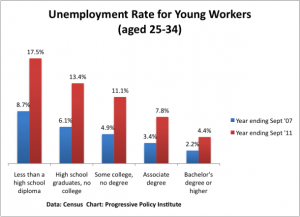Is it absolutely neccessary to keep employees happy if a company wants to maximize profit? Through examing Zappo’s corporate culture, it seems that a positive, and relaxed work environment directly correlates to the productivity and growth of a company. Therefore, it is tempting for one to conclude that Zappo’s culture should be an model for other companies. In Cole Christiansen’s post: “An Offiice Revolution” he argues that having a positive work environment is crucial for a company’s success. To substantiate his point, he brought up the example of Google which is renowned for its informal and flexible work environment. However, evidences suggest that Zappo and Google’s work environments are not universially suitable. Management theorist Jim Collin argues that corporate culture is unique to each company and that it would be detrimental for a company to copy another’s culture. For example, Foxconn, the world’s largst electronic manufacture, is famous for having a rigid,military like corportate culture. However, it seems unfeasible and undisrable for foxconn to liberalized its work environment since the nature of the company’s business relies on precision and worker compliance.
Reference:
http://www.wikisummaries.org/Built_to_Last
https://blogs.ubc.ca/colechristiansen/2013/11/15/an-office-revolution/
Photo Reference:










